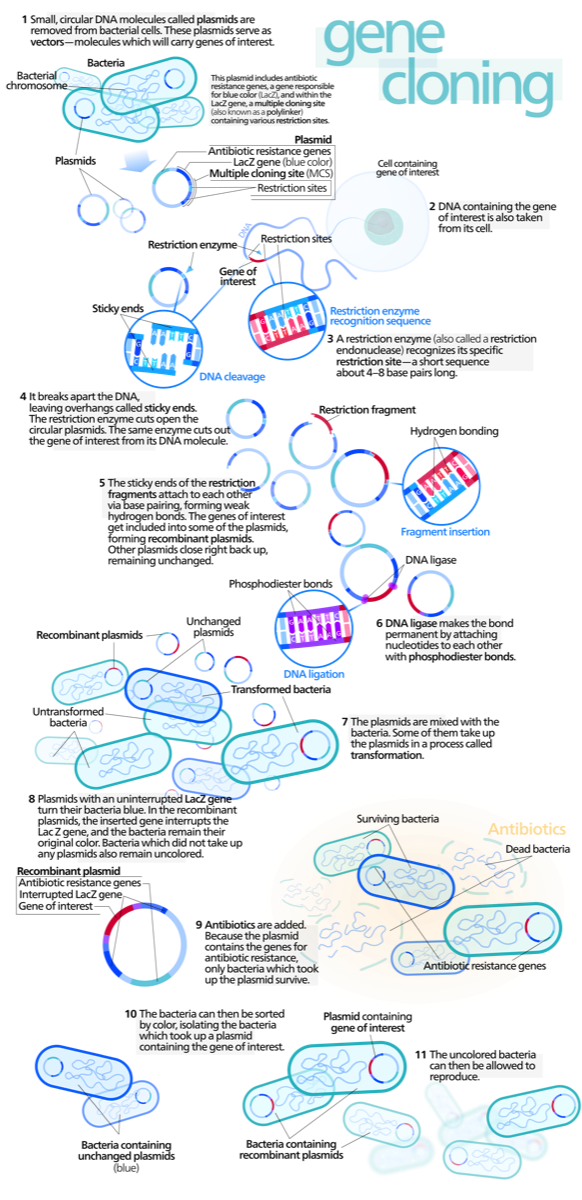Genetic Engineering
This website was originally developed for people who were contemplating the then new tool of DNA testing for genealogy. Cloning DNA by inserting segments that have been isolated by restriction endonuclease into bacteria is sometimes used to amplify DNA from test samples before sequencing or other analyses. But to my knowledge it is not used in preparation of samples for commercial DNA testing for genealogy. For that reason, I did not include it in the original website. However, over the years, I have seen heavy traffic from students from middle school to college level. I still have not developed a narrative for this topic. For those who are studying for a comprehensive unit on molecular biology, I have chosen several videos that I think are informative and clearly presented.
In addition I have embedded a flowchart diagram for cloning for notebook/tablet users. ( It is too big to be useful on mobile screens.)
Steps in Genetic Cloning
Hendro Pramono (29 Mar 2014) Steps in Gene Cloning [Video file] retrieved from https://youtu.be/cVKsVnE3rYU
Hendro Pramono (29 Mar 2014) Steps in Gene Cloning [Video file] retrieved from https://youtu.be/cVKsVnE3rYU
Genetic Engineering Video
Anne Johnson (3 Mar 2014) Genetic Engineering [Video file] retrieved from https://youtu.be/BK12dQq4sJw
Anne Johnson (3 Mar 2014) Genetic Engineering [Video file] retrieved from https://youtu.be/BK12dQq4sJw



